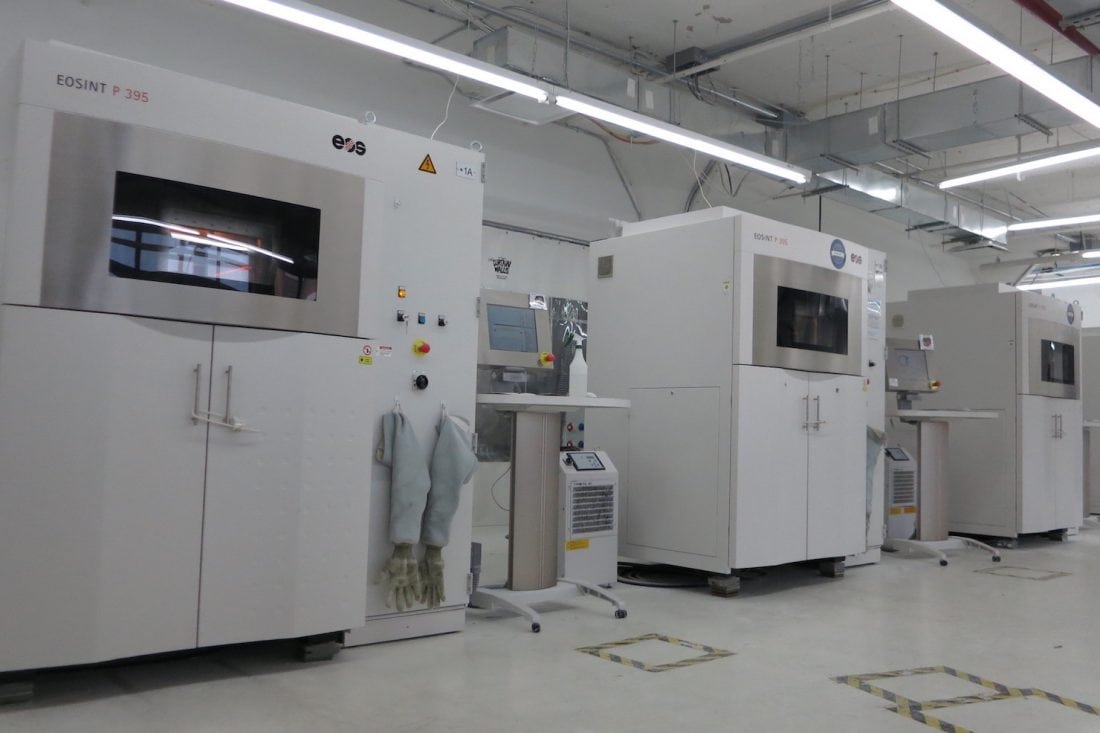
Since the inception of 3D printing in the mid 80s and 90s–the ability to take a computer-aided design (CAD) and turn it into a tangible, easily refined product has continued to entice large organizations in aerospace and automotive as well as a growing number of OEMs.
Industry projections regarding the impact of additive manufacturing on a global scale are hard to ignore. The 3D printing market was valued at USD 13.84 billion in 2021, and projected to show a compound annual growth rate of 20.8%. As market development continues to accelerate, many traditional companies are becoming more curious about what 3D printing can do for them, to those who are already running hybrid factories or even transforming completely over to additive manufacturing.

Transforming – The Benefits of 3D Printing
Traditional manufacturers may initially be enticed by the potential for savings with 3D printing; however, it doesn’t take long to see the industrial advantages are multi-layered, with the potential for unprecedented manufacturing agility. The most remarkable feature setting additive manufacturing apart is the ability to customize intensively. Complex parts previously impossible to make via traditional methods can now be perfectly designed according to the customer’s specifications and product requirements.
Other classic benefits include:
- Design Freedom – Not only does 3D printing present greater affordability and accessibility in making traditional manufacturing vs. additive manufacturing comparisons, industrial engineers enjoy a whole new level of design freedom with technology like Selective Laser Sintering 3D printing, Multi Jet Fusion 3D printing, or Binder Jetting. While this is true of AM processes as a whole, powder-based technology like SLS or MJF present even greater design freedom because they do not require support structures. Unsintered powder bunches up around parts during production, protecting them throughout the 3D printing process. The potential for damage is eliminated in post-processing, saving unexpected costs and potential headaches.
- Smart packing of parts – Thousands of parts can be 3D printed simultaneously in powder-based technology with smart packing of 3D models, also known as nesting. Ultimately, designers and industrial engineers can focus on making complex, customized 3D models rather than spending time compensating for support structures. Larger assemblies can also be consolidated into singular components or fewer parts.
- Streamlined product development – Continuing to cash in on the advantages of the original intent behind 3D printing, rapid prototyping is the catalyst behind maximized product development. Prototyping is exponentially faster and more affordable. The ability to get feedback quickly and make edits as needed leads to speed in production, higher-quality products, and a swifter journey in getting products to market.
- On-demand 3D printing – Manufacturers can overcome supply chain challenges, offering production at more localized sites and allowing customers to order parts as needed. Another great benefit is that with on-demand 3D printing, no one has to maintain an extensive inventory–and in some cases–none at all.

Transitioning – from Traditional to Additive Manufacturing
Conventional methods have stood the test of time due to precision in manufacturing and mass production. Today, the key is to understand when additive manufacturing vs. traditional manufacturing makes sense in terms of overall quality. In transitioning to additive manufacturing over traditional manufacturing, the goal is still to make high-performance prototypes and parts that last. Injection Molding or CNC Machining might be the best fit for a particular customer as consumer demand rises for mass production, or parts may be more well-suited to AM processes.
Shapeways remains dedicated to recommending what is best for the customer, and often this means taking an agnostic approach in terms of technology. The focus remains on working around customers’ needs to match the correct materials and processes to a specific application. Customers like 67 Designs remain dedicated to using 3D printing technology with advanced materials like Nylon 12 [Versatile Plastic] even as their production demands rise for tablet mounts in off-roading vehicles.
Many customers use a combination of 3D printing and traditional manufacturing for both prototypes and end-use parts for 3D printed drone frames, depending on project requirements. Others like Tilt Hydrometer or Voytek Medical enjoy the convenience of 3D printing with one material or experimenting with several, and then going on to manufacture them with the same materials–for years on end in numerous cases.
Hybrid production settings allow manufacturers and customers to have the best of all worlds, on demand, with complementary technologies–and often, dynamic industry collaborations.
About Shapeways
Enjoy the benefits of this advanced technology and a wide range of materials from Shapeways for 3D printing your creations with accuracy, complex detail, and no minimum or limits in terms of mass customization or single part orders. Shapeways has worked with over 1 million customers in 160 countries to 3D print over 21 million parts! Read about case studies, find out more about Shapeways additive manufacturing solutions, and get instant quotes here.


